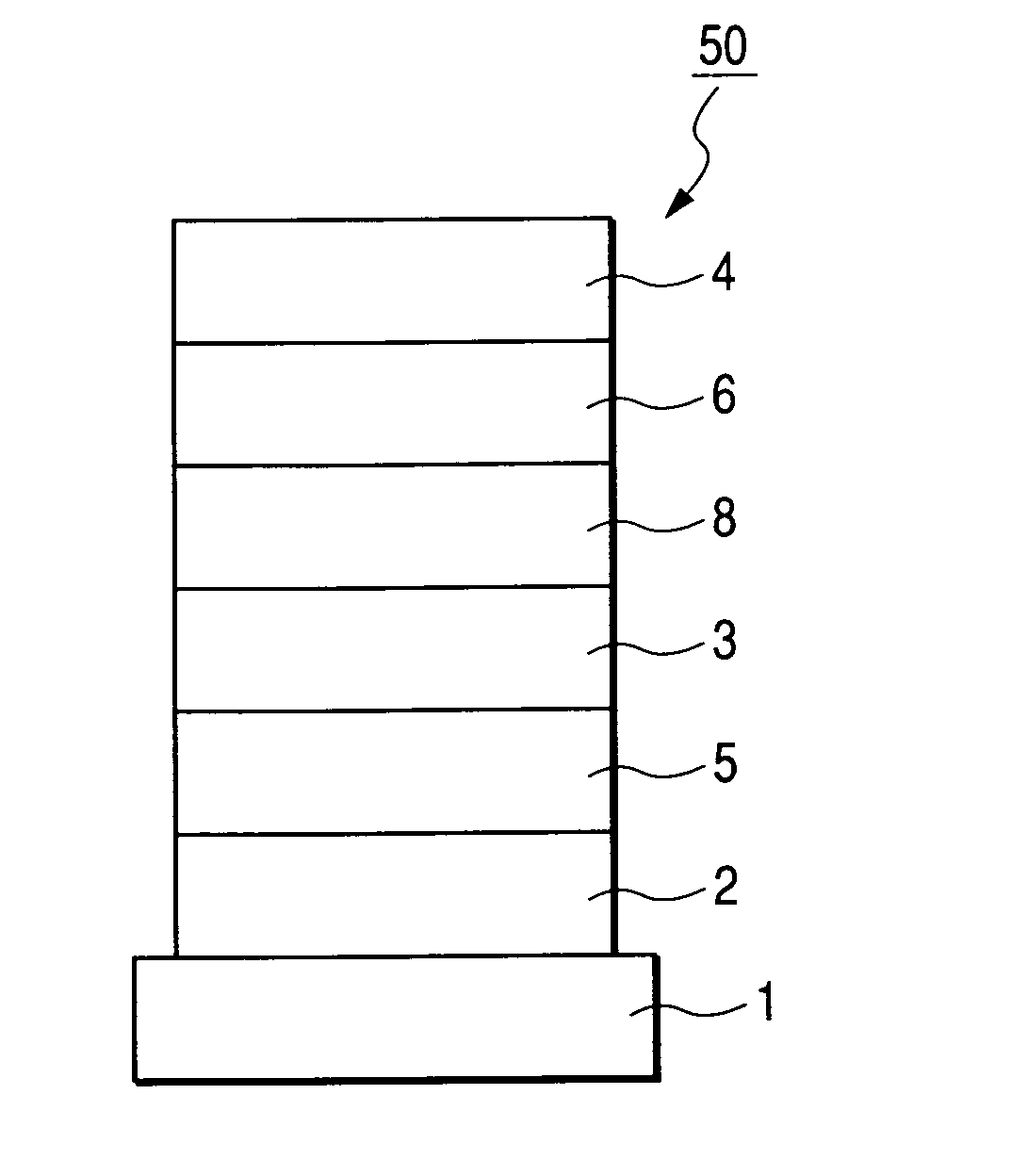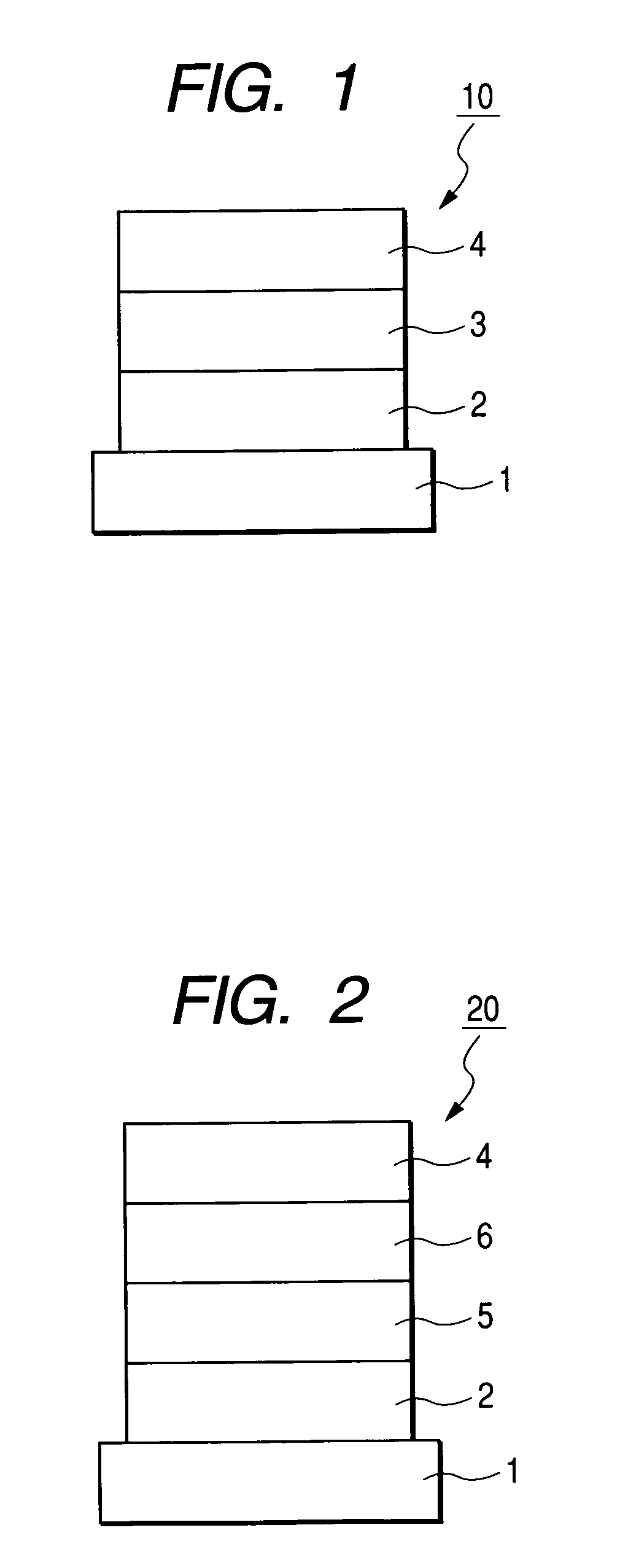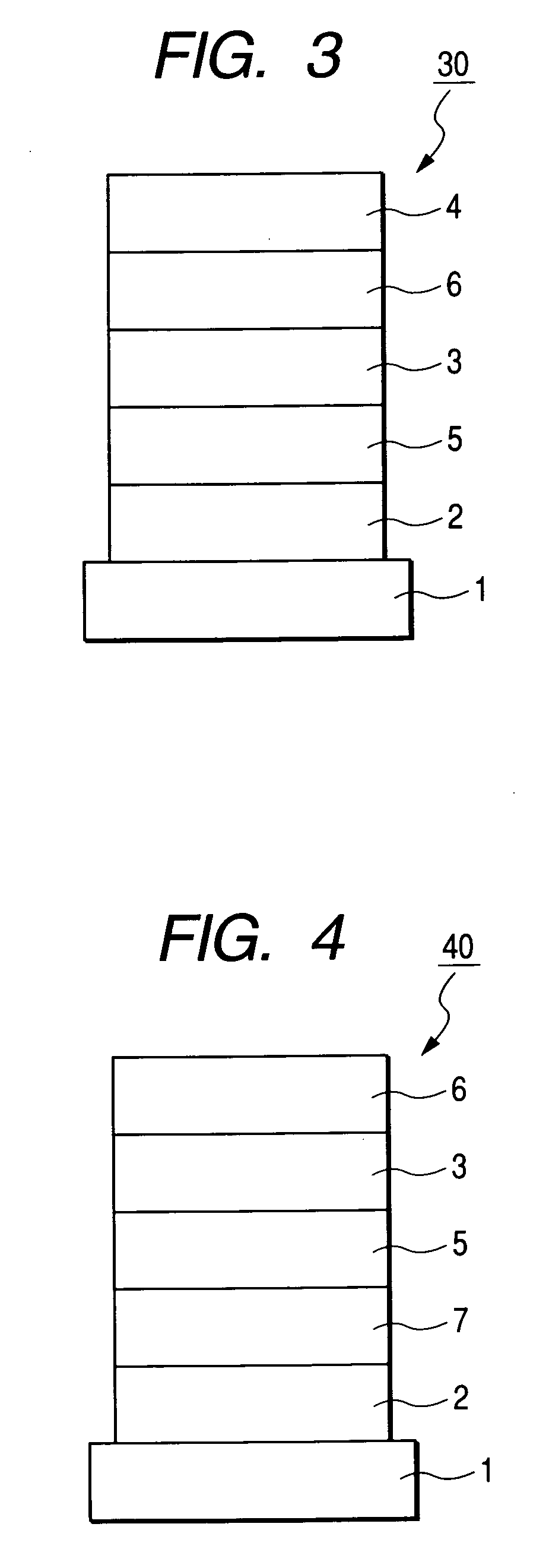Condensed ring aromatic compound for organic light-emitting device and organic light-emitting device having the same
a technology of aromatic compound and organic light, which is applied in the direction of solid-state devices, discharge tubes/lamp details, natural mineral layered products, etc., and can solve problems such as inability to fully solve problems that cannot be recognized
- Summary
- Abstract
- Description
- Claims
- Application Information
AI Technical Summary
Benefits of technology
Problems solved by technology
Method used
Image
Examples
example 1
Synthesis of Exemplified Compound A-1
(1-1) Synthesis of Synthetic Intermediate Compound 1-3
The following reagents and solvent were charged in a 300 ml-recovery flask, and stirred under a nitrogen flow at 60° C. for 8 hours.
Compound 1-1: 1.3 g (4.05 mmol)
Compound 1-2: 1.22 g (8.90 mmol)
Tetrakistriphenylphosphine palladium (0): 519 mg (0.45 mmol)
Toluene: 100 ml
Ethanol: 50 ml
2M-sodium carbonate aqueous solution: 20 ml
After completion of the reaction, ethyl acetate and water were added to separate the organic layer, dried over magnesium sulfate, and then the solvent was distilled off. Purification was carried out by silica gel column chromatography (developing solvent: toluene / heptane=1 / 1), and 1.3 g of the compound 1-3 (yield 78%) was obtained.
(1-2) Synthesis of Synthetic Intermediate Compound 1-4
The following reagents, solvent and the like were charged in a recovery flask, and stirred in a cooling bath at −20° C. for 30 minutes.
Compound 1-3: 1.3 g (3.15 mmol)
Chloroform: 100 ml
Triethyl...
example 2
Synthesis of Exemplified Compound C-6
Exemplified compound C-6 was synthesized in the same synthesis method as Example 1. Specifically, the synthesis was carried out under the same conditions in Example 1 except for changing compound 1-2 to compound 1-5.
With respect to the obtained compound, the physical properties thereof were measured and evaluated.
(Molecular Weight)
It was confirmed that M+ was 488.6 by MALDI-TOF-MS (matrix-assisted laser deposition ionization—time of flight mass spectrometry), and the exemplified compound C-6 was identified.
(NMR)
The structure of this exemplified compound C-6 was confirmed by NMR measurement.
1H-NMR (CDCl3, 400 MHz) σ (ppm): 9.15 (s, 2H), 8.69 (d, 2H, J=8.0 Hz), 8.08-8.01 (m, 6H), 7.87-7.83 (m, 2H), 7.52-7.48 (m, 2H), 1.54 (s, 18H)
It was confirmed that a melting point of the exemplified compound C-6 was 459° C. by differential scanning calorimetry.
(Light-Emitting Characteristics)
Absorption spectrum of a toluene solution (1×10−5 mol / l)...
example 3
Synthesis of Exemplified Compounds G-14 and G-19
(3-1) Synthesis of Synthetic Intermediate Compound 1-6
The following reagents and solvent were charged in a 300 ml-recovery flask, and stirred under a nitrogen flow at 80° C. for 8 hours.
Compound 1-1: 2.5 g (6.48 mmol)
4,4,5,5-tetramethyl-1,3,2-dioxaborolane: 5.63 ml (38.8 mmol)
[1,3-bis(diphenylphosphino)propane]dichloronickel II): 325 mg (0.65 mmol)
Toluene: 100 ml
Triethylamine: 30 ml
After completion of the reaction, the temperature was cooled to room temperature, and water was then added thereto. An aqueous ammonium chloride solution was further added and stirred for 3 hours. Then, ethyl acetate and water were added to separate the organic layer, dried over magnesium sulfate, and then the solvent was distilled off. Purification was carried out by silica gel column chromatography (developing solvent: toluene), and 2.1 g (yield 68%) of the compound 1-6 was obtained.
(3-2) Synthesis of Synthetic Intermediate Compound 1-8
The following reagen...
PUM
| Property | Measurement | Unit |
|---|---|---|
| excitation wavelength | aaaaa | aaaaa |
| melting point | aaaaa | aaaaa |
| excitation wavelength | aaaaa | aaaaa |
Abstract
Description
Claims
Application Information
 Login to View More
Login to View More - R&D
- Intellectual Property
- Life Sciences
- Materials
- Tech Scout
- Unparalleled Data Quality
- Higher Quality Content
- 60% Fewer Hallucinations
Browse by: Latest US Patents, China's latest patents, Technical Efficacy Thesaurus, Application Domain, Technology Topic, Popular Technical Reports.
© 2025 PatSnap. All rights reserved.Legal|Privacy policy|Modern Slavery Act Transparency Statement|Sitemap|About US| Contact US: help@patsnap.com



